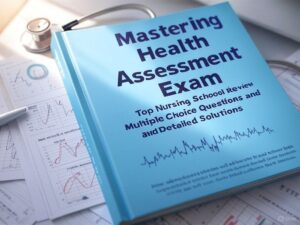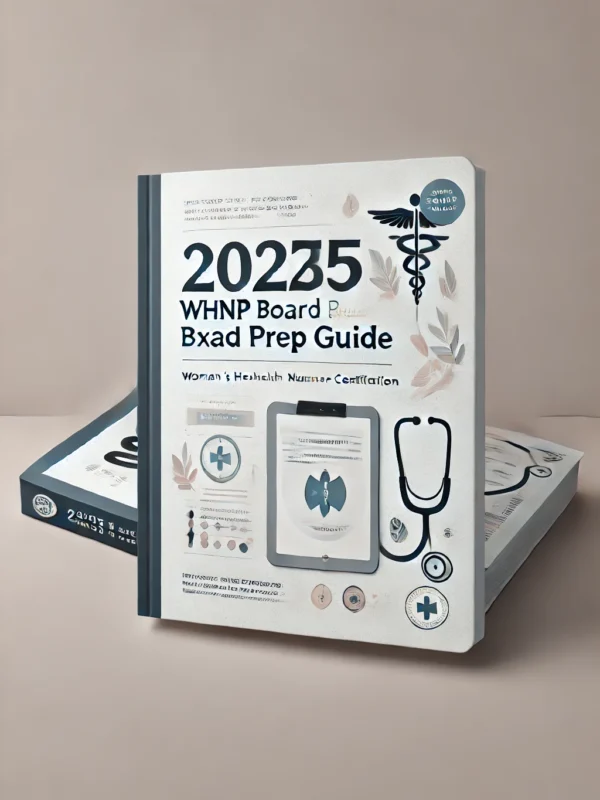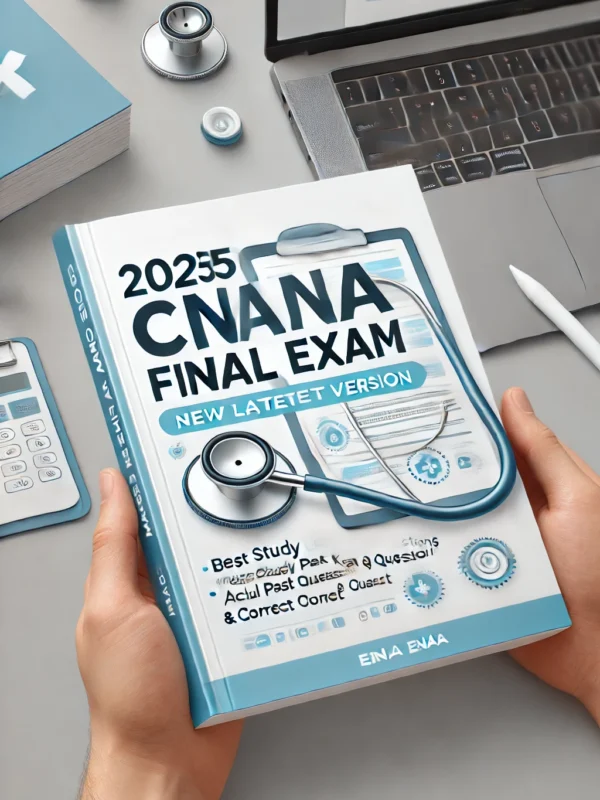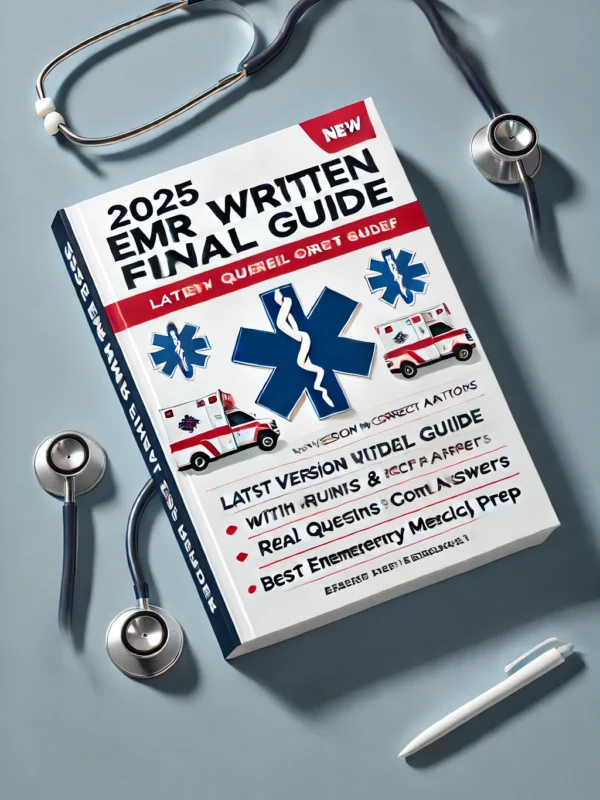Conquer Health Assessment Exam 3 with the 2025 Mastering Health Assessment Exam 3: Top Nursing School Review with Multiple Choice Questions and Detailed Solutions! This powerful resource is designed for nursing students aiming to excel in their assessments and build a strong foundation for clinical practice. Packed with exam-focused content, it offers the tools you need to succeed with confidence.
What’s inside to ensure your mastery:
-
Multiple Choice Questions: Extensive practice questions mirroring Health Assessment Exam 3 challenges.
-
Detailed Solutions: In-depth explanations to help you understand each answer thoroughly.
-
Exam-Focused Review: Covers all key topics for the 2025 Health Assessment Exam 3 curriculum.
-
Practical Learning Format: Structured for quick comprehension and effective study sessions.
-
Confidence-Building Content: Designed to prepare you for both the exam and real-world nursing scenarios.
Step up your nursing school game—grab this 2025 review guide and ace Health Assessment Exam 3!
Preview
1. Select the sequence of techniques used during an examination of the abdomen:
a) percussion, inspection, palpation, auscultation
b) inspection, palpation, percussion, auscultation
c) inspection, auscultation, percussion, palpation ✅
d) auscultation, inspection, palpation, percussion
Correct Answer: c
Rationale: In abdominal assessment, inspection comes first, followed by
auscultation, then percussion, and finally palpation. This sequence prevents altering
bowel sounds, which can happen if you palpate or percuss first.
2. Which of the following may be noted through inspection of the abdomen?
a) fluid waves and abdominal contour
b) umbilical eversion and Murphy sign
c) venous pattern, peristaltic waves, and abdominal contour ✅
d) peritoneal irritation, general tympany, and peristaltic waves
Correct Answer: c
Rationale: Inspection can reveal external signs such as venous patterns, visible
peristalsis, and abdominal contour, which may indicate underlying issues.
3. Right upper quadrant tenderness may indicate pathology in the:
a) liver, pancreas, or ascending colon ✅
b) liver and stomach
c) sigmoid colon, spleen, or rectum
d) appendix or ileocecal valve
Correct Answer: a
Rationale: The right upper quadrant (RUQ) houses the liver, gallbladder, part of the
pancreas, and ascending colon, making them the likely sources of pain in that region.
4. Hyperactive bowel sounds are:
a) high pitched
b) rushing
c) tinkling
d) all of the above ✅
Correct Answer: d
Rationale: Hyperactive bowel sounds are often described as high-pitched, rushing,
and tinkling, indicating increased intestinal activity (e.g., early bowel obstruction,
diarrhea).
a) percussion, inspection, palpation, auscultation
b) inspection, palpation, percussion, auscultation
c) inspection, auscultation, percussion, palpation ✅
d) auscultation, inspection, palpation, percussion
Correct Answer: c
Rationale: In abdominal assessment, inspection comes first, followed by
auscultation, then percussion, and finally palpation. This sequence prevents altering
bowel sounds, which can happen if you palpate or percuss first.
2. Which of the following may be noted through inspection of the abdomen?
a) fluid waves and abdominal contour
b) umbilical eversion and Murphy sign
c) venous pattern, peristaltic waves, and abdominal contour ✅
d) peritoneal irritation, general tympany, and peristaltic waves
Correct Answer: c
Rationale: Inspection can reveal external signs such as venous patterns, visible
peristalsis, and abdominal contour, which may indicate underlying issues.
3. Right upper quadrant tenderness may indicate pathology in the:
a) liver, pancreas, or ascending colon ✅
b) liver and stomach
c) sigmoid colon, spleen, or rectum
d) appendix or ileocecal valve
Correct Answer: a
Rationale: The right upper quadrant (RUQ) houses the liver, gallbladder, part of the
pancreas, and ascending colon, making them the likely sources of pain in that region.
4. Hyperactive bowel sounds are:
a) high pitched
b) rushing
c) tinkling
d) all of the above ✅
Correct Answer: d
Rationale: Hyperactive bowel sounds are often described as high-pitched, rushing,
and tinkling, indicating increased intestinal activity (e.g., early bowel obstruction,
diarrhea).











Reviews
There are no reviews yet.